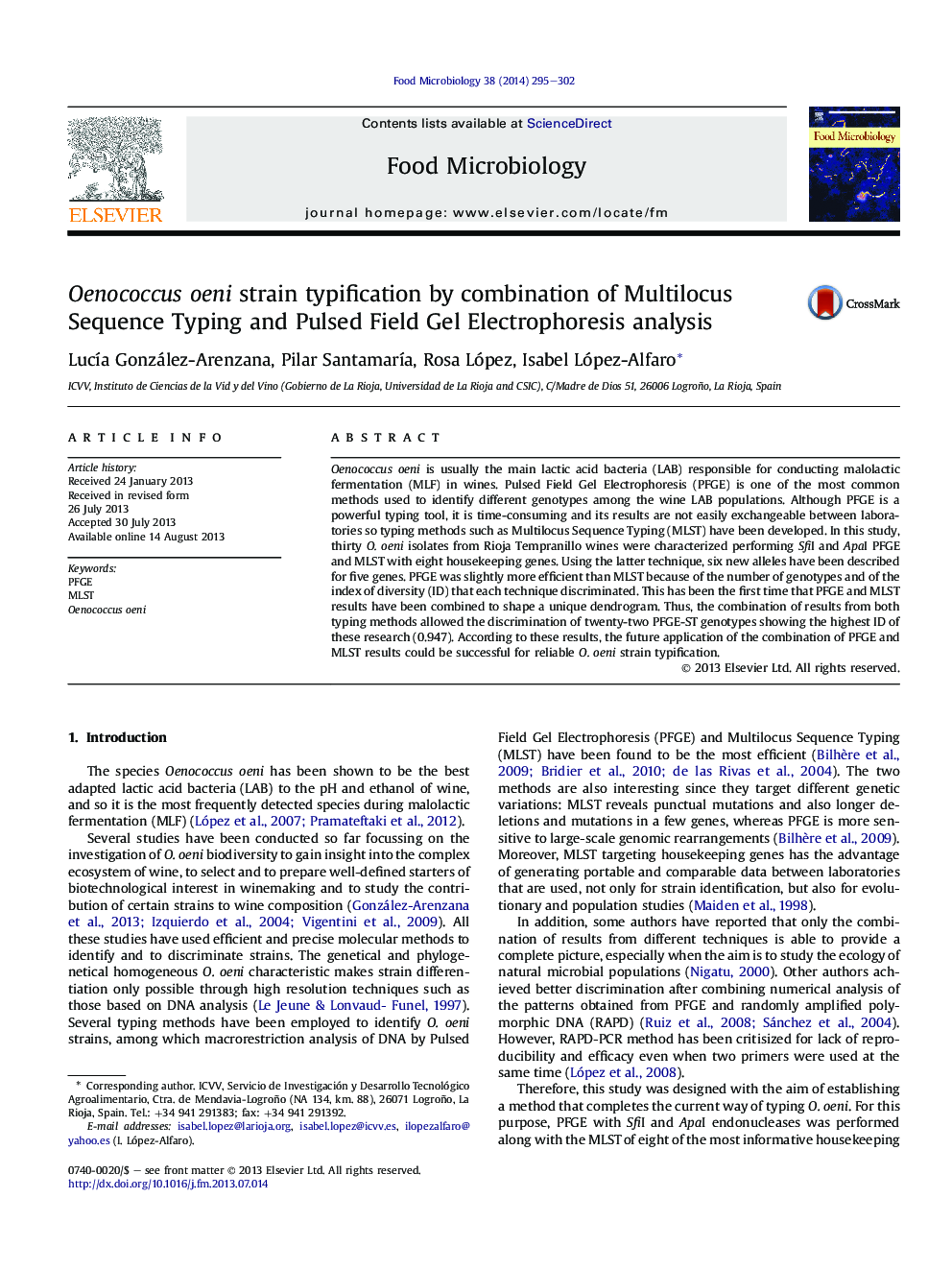| کد مقاله | کد نشریه | سال انتشار | مقاله انگلیسی | نسخه تمام متن |
|---|---|---|---|---|
| 4362946 | 1616261 | 2014 | 8 صفحه PDF | دانلود رایگان |

• Endonuclease SfiI was the most successful one in Oenococcus oeni strain typing by PFGE.
• Six O. oeni novel alleles were determined by sequencing of eight targeted housekeeping genes.
• Evident distinct way of clustering by PFGE and MLST was demonstrated.
• Combined numerical analysis of PFGE and MLST results was used for the first time to shape an unique dendrogram.
• Combination of both techniques was the most discriminatory strategy for O. oeni characterization.
Oenococcus oeni is usually the main lactic acid bacteria (LAB) responsible for conducting malolactic fermentation (MLF) in wines. Pulsed Field Gel Electrophoresis (PFGE) is one of the most common methods used to identify different genotypes among the wine LAB populations. Although PFGE is a powerful typing tool, it is time-consuming and its results are not easily exchangeable between laboratories so typing methods such as Multilocus Sequence Typing (MLST) have been developed. In this study, thirty O. oeni isolates from Rioja Tempranillo wines were characterized performing SfiI and ApaI PFGE and MLST with eight housekeeping genes. Using the latter technique, six new alleles have been described for five genes. PFGE was slightly more efficient than MLST because of the number of genotypes and of the index of diversity (ID) that each technique discriminated. This has been the first time that PFGE and MLST results have been combined to shape a unique dendrogram. Thus, the combination of results from both typing methods allowed the discrimination of twenty-two PFGE-ST genotypes showing the highest ID of these research (0.947). According to these results, the future application of the combination of PFGE and MLST results could be successful for reliable O. oeni strain typification.
Journal: Food Microbiology - Volume 38, April 2014, Pages 295–302